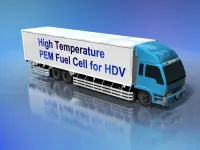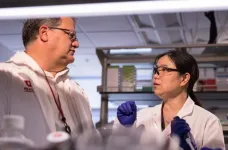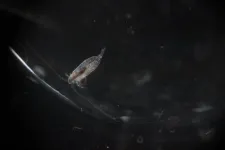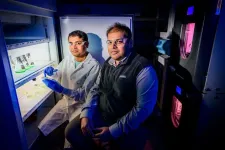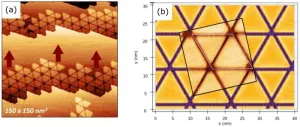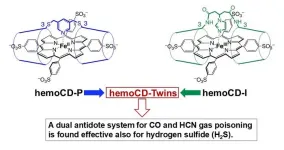(Press-News.org) A research group led by Atsushi Noro at Nagoya University in Japan has announced a novel design concept for fuel cell electrolytes, utilizing a phosphonic acid polymer with hydrocarbon spacers. This innovative concept allows fuel cells to operate effectively under high-temperature (above 100°C) and low-humidity conditions, addressing crucial barriers to their broader use. The research has been published in ACS Applied Polymer Materials.
By electrochemically reacting hydrogen and oxygen, fuel cells produce electricity while emitting only water, highlighting their clean energy capabilities. However, perfluorosulfonic acid polymers, a type of per- and polyfluoroalkyl substance (PFAS) commonly used in fuel cells is causing a backlash. The presence of PFAS in the environment and their accumulation within living organisms has prompted regulatory measures in many nations.
Unlike PFAS, phosphonic acid hydrocarbon polymers do not contain fluorine, making them less likely to persist in the environment. These polymers also exhibit moderate chemical stability under high-temperature and low-humidity conditions. Despite these advantages, poor conductivity and the hydrophilic nature of phosphonic acid groups, which attract water, limit their use, potentially leading to dissolution in humid environments.
To overcome these challenges, Noro introduced a hydrophobic spacer between the polymer backbone and the phosphonic acid groups of a phosphonic acid hydrocarbon polymer. This enabled water insolubility, chemical stability, and moderate conductivity, even at high temperatures and low humidities. Additionally, the hydrophobic spacer effectively repelled water, ensuring that the material’s stability was maintained.
The new membrane demonstrated significantly higher water insolubility in hot water compared to polystyrene phosphonic acid membrane without hydrophobic spacers and a commercially available membrane of cross-linked sulfonated polystyrene.
“Under conditions of 120°C and 20% relative humidity, the conductivity of the developed membrane reached 40 times higher than polystyrene phosphonic acid membrane and 4 times higher than cross-linked sulfonated polystyrene membrane,” Noro said.
“Finding a fuel cell that operates under low-humidity and high-temperature conditions offers many advantages for fuel cell vehicles,” Noro continued. “First, the reactions at the electrodes of a fuel cell proceed more rapidly at higher temperatures, enhancing overall performance of the fuel cell and improving power generation efficiency. Second, there is reduced carbon monoxide (CO) poisoning of the electrodes, as trace amounts of CO in the hydrogen fuel tend to adsorb onto the catalyst at lower temperatures, but not at higher temperatures. Third, the fuel cell benefits from more efficient heat dissipation at high temperatures, allowing simpler cooling system designs and no external humidification, enabling lighter and more compact systems.”
This study received support from the New Energy and Industrial Technology Development Organization (NEDO). According to the NEDO Roadmap for Fuel Cell and Hydrogen Technology Development, the proposed design concept for electrolyte membranes presented in this study marks a major contribution to developing next-generation fuel cells that support the shift to a net-zero carbon society. Patent applications for materials related to the suggested design concept have been filed in Japan and several other countries.
END
New concept for sustainable fuel cell polymer electrolytes overcomes barriers in high-temperature, low-humidity use, advancing net-zero carbon goals
2024-12-10
ELSE PRESS RELEASES FROM THIS DATE:
Sculpting the brain (without chisel or scalpel)
2024-12-10
Imagine being able to inscribe a new pattern of activity into a person’s brain that would allow for faster learning, or better treatment of psychiatric and developmental disorders such as depression or autism. Now imagine being able to do that in a way that doesn’t require brain surgery or any physical manipulation. Sounds like science fiction?
It still is. But that’s exactly what Coraline Iordan, an assistant professor of brain and cognitive sciences and of neuroscience at the University of Rochester has been working toward, showing for the ...
Wrong trees in the wrong place can make cities hotter at night, study reveals
2024-12-10
University of Cambridge media release
Wrong trees in the wrong place can make cities hotter at night, study reveals
UNDER STRICT EMBARGO UNTIL 10:00 AM UK TIME / 05:00 AM (US ET) ON TUESDAY 10TH DECEMBER 2024
While trees can cool some cities significantly during the day, new research shows that tree canopies can also trap heat and raise temperatures at night. The study aims to help urban planners choose the best combinations of trees and planting locations to combat ...
New gene therapy reverses heart failure in large animal model
2024-12-10
A new gene therapy can reverse the effects of heart failure and restore heart function in a large animal model. The therapy increases the amount of blood the heart can pump and dramatically improves survival, in what a paper describing the results calls “an unprecedented recovery of cardiac function.”
Currently, heart failure is irreversible. In the absence of a heart transplant, most medical treatments aim to reduce the stress on the heart and slow the progression of the often-deadly disease. But if the gene therapy shows similar ...
Young children less likely than adults to see discrimination as harmful
2024-12-10
A White House report earlier this year outlined how discrimination, and specifically racial discrimination, persists in the United States today, raising questions about when attitudes underlying these behaviors are formed.
Past scholarship has found discriminatory views increase as children grow older. However, new work by a team of New York University psychology researchers shows that young children in the US are less likely than adults to see discrimination as harmful, indicating these beliefs begin at an early age. Moreover, children ...
Tiny poops in the ocean may help solve the carbon problem
2024-12-10
A Dartmouth-led study proposes a new method for recruiting trillions of microscopic sea creatures called zooplankton in the fight against climate change by converting carbon into food the animals would eat, digest, and send deep into the ocean as carbon-filled feces.
The technique harnesses the animals' ravenous appetites to essentially accelerate the ocean's natural cycle for removing carbon from the atmosphere, which is known as the biological pump, according to the paper in Nature Scientific Reports.
It begins ...
Study offers insight into chloroplast evolution
2024-12-10
CHAMPAIGN, Ill. — One of the most momentous events in the history of life involved endosymbiosis — a process by which one organism engulfed another and, instead of ingesting it, incorporated its DNA and functions into itself. Scientific consensus is that this happened twice over the course of evolution, resulting in the energy-generating organelles known as mitochondria and, much later, their photosynthetic counterparts, the plastids.
A new study published in the journal Nature Communications explores the origin of chloroplasts, the plastids that allow plants ...
Advancing the synthesis of two-dimensional gold monolayers
2024-12-10
Nanostructured two-dimensional gold monolayers offer possibilities in catalysis, electronics, and nanotechnology.
Researchers have created nearly freestanding nanostructured two-dimensional (2D) gold monolayers, an impressive feat of nanomaterial engineering that could open up new avenues in catalysis, electronics, and energy conversion.
Gold is an inert metal which typically forms a solid three-dimensional (3D) structure. However, in its 2D form, it can unlock extraordinary properties, such as unique electronic behaviors, enhanced surface reactivity, and immense potential for revolutionary applications in catalysis ...
Human disruption is driving ‘winner’ and ‘loser’ tree species shifts across Brazilian forests
2024-12-10
Fast-growing and small-seeded tree species are dominating Brazilian forests in regions with high levels of deforestation and degradation, a new study shows.
This has potential implications for the ecosystem services these forests provide, including the ability of these ‘disturbed’ forests to absorb and store carbon. This is because these “winning” species grow fast but die young, as their stems and branches are far less dense than the slow growing tree species they replace.
Wildlife species adapted to consuming and dispersing the large seeds of tree species that ...
A novel heme-model compound that treats lethal gas poisoning
2024-12-10
You may not be familiar with hydrogen sulfide, a colorless gas that smells like rotten eggs, and is produced naturally from decaying matter. However, this gas is lethal to breathe in, and hydrogen sulfide present in high concentrations can cause death very rapidly. Its relative density is also greater than air, causing it to accumulate at lower altitudes and posing an enormous threat to workers at sites, such as manholes, sewage systems and mining operations.
Why is hydrogen sulfide so dangerous? It binds strongly to the heme-containing cytochrome c oxidase ...
Shape-changing device helps visually impaired people perform location task as well as sighted people - EMBARGO: Tuesday 10 December (10:00 UK time)
2024-12-10
IMPERIAL COLLEGE LONDON PRESS RELEASE
Under STRICT EMBARGO until:
10 December 2024
10:00 UK TIME / 05:00 ET
Peer-reviewed / Observational study / People
Trial shows no significant difference in performance between visually impaired participants using new device and sighted participants using only natural vision.
Participants performed significantly better using new device than with currently available vibration technology.
The new device is believed to be the most advanced navigation tech of ...
